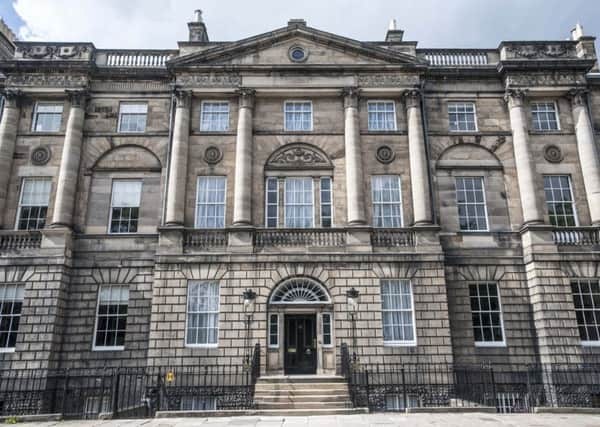‘No evidence’ Bute House chandelier looted by Nazis


It was reported on Sunday that the light fitting, which hangs in the building’s drawing room, had been stolen by Nazis during World War Two.
The conservation charity said it had undertaken a preliminary investigation within its archives on the provenance of the chandelier.
Advertisement
Hide AdAdvertisement
Hide AdIt said the object had been acquired, along with Bute House itself, by the UK Treasury in 1966 in lieu of death duties following the death of the Fifth Marquess of Bute in 1956.
The provenance of the chandelier is thought to be based on a written account which had been in the possession of the donor family. This was contained in a red morocco and gilt frame which originally had been displayed in the drawing room along with the chandelier.
The description of the circumstances of the recovery of the chandelier, which features in a guidebook on Bute House published by the Scottish Government in 2002 is apparently based on this written account.
It describes how interior decorator Felix Harbord, while serving in the military, recovered the damaged chandelier from Germany in 1945 “abandoned in the streets of Cleves” and forwarded it to Lady Bute, who arranged for its subsequent repair and installation at Bute House.
The NTS said the account appeared to be the only source of information on the provenance of the chandelier and no further records can be found within the National Trust for Scotland’s archives.
However, it has emerged that a 2008 report by the Simon Wiesenthal Centre is sceptical about the account, suggesting it may have been “looted from the British collecting point at Schloss Celle, or it may be an object looted from legitimate German ownership”.
The NTS’ Jennifer Melville said: “Unfortunately, back in the 1960s, when Bute House and its fixtures and fittings were acquired by the Treasury, it was not common for the detailed histories of objects to be investigated. They would simply be acquired, catalogued and put on display.
“Nowadays there is a much more rigorous approach and all museums and galleries in the UK are particularly mindful of the issues surrounding items acquired in the 1930s and 1940s.
Advertisement
Hide AdAdvertisement
Hide Ad“With this particular chandelier, all we have to go on is the written account passed on by the Marquess of Bute’s estate. The scenario painted by the Simon Wiesenthal Center is concerning but we still have no conclusive evidence to confirm that the chandelier was indeed looted.
“Nevertheless, as responsible custodians, we will lodge details of the chandelier on the central spoliation database. This contains a list of artefacts held in the UK of uncertain provenance and enables anyone who may have further information to come forward.“